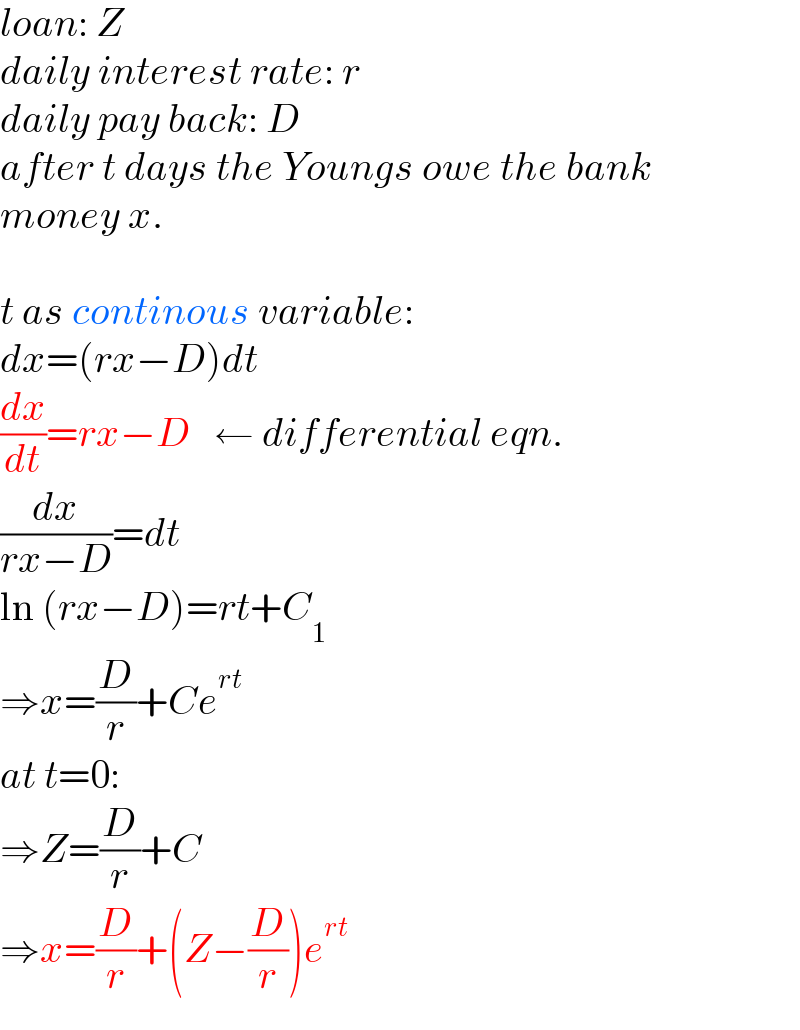
Question and Answers Forum
Question Number 165780 by MWSuSon last updated on 08/Feb/22

Commented by MWSuSon last updated on 08/Feb/22

Commented by mr W last updated on 08/Feb/22

Commented by mr W last updated on 08/Feb/22
![loan: Z daily interest rate: r daily pay back: D after t days the Youngs owe the bank money x. t as discrete variable: from Q165404 we have x=Z(1+r)^t −((D[(1+r)^t −1])/r) x=(D/r)+(Z−(D/r))(1+r)^t](Q165796.png)
Commented by mr W last updated on 08/Feb/22

Commented by MWSuSon last updated on 08/Feb/22
Thank you sir, you have been of wonderful help. i wish you success in all you do sir, thank you.
Commented by mr W last updated on 09/Feb/22
![thanks sir! this example shows exactly how the number “e” was discovered. when we calculate the interest not daily, e.g. we divide a day into many parts, then we get x=(D/r)+(Z−(D/r))(1+(r/n))^(nt) x=(D/r)+(Z−(D/r))[(1+(r/n))^(n/r) ]^(rt) when we divide a day into infinite many parts, i.e. n→∞, then x=(D/r)+(Z−(D/r))[lim_(n→∞) (1+(r/n))^(n/r) ]^(rt) people found that this number lim_(n→∞) (1+(r/n))^(n/r) really exists, and denoted it as “e”. and we get x=(D/r)+(Z−(D/r))e^(rt)](Q165846.png)
Commented by MWSuSon last updated on 09/Feb/22
I don't know why I don't get notified whenever there's a reply on my post, thank you sir for this additional info.
Commented by Tawa11 last updated on 10/Feb/22

